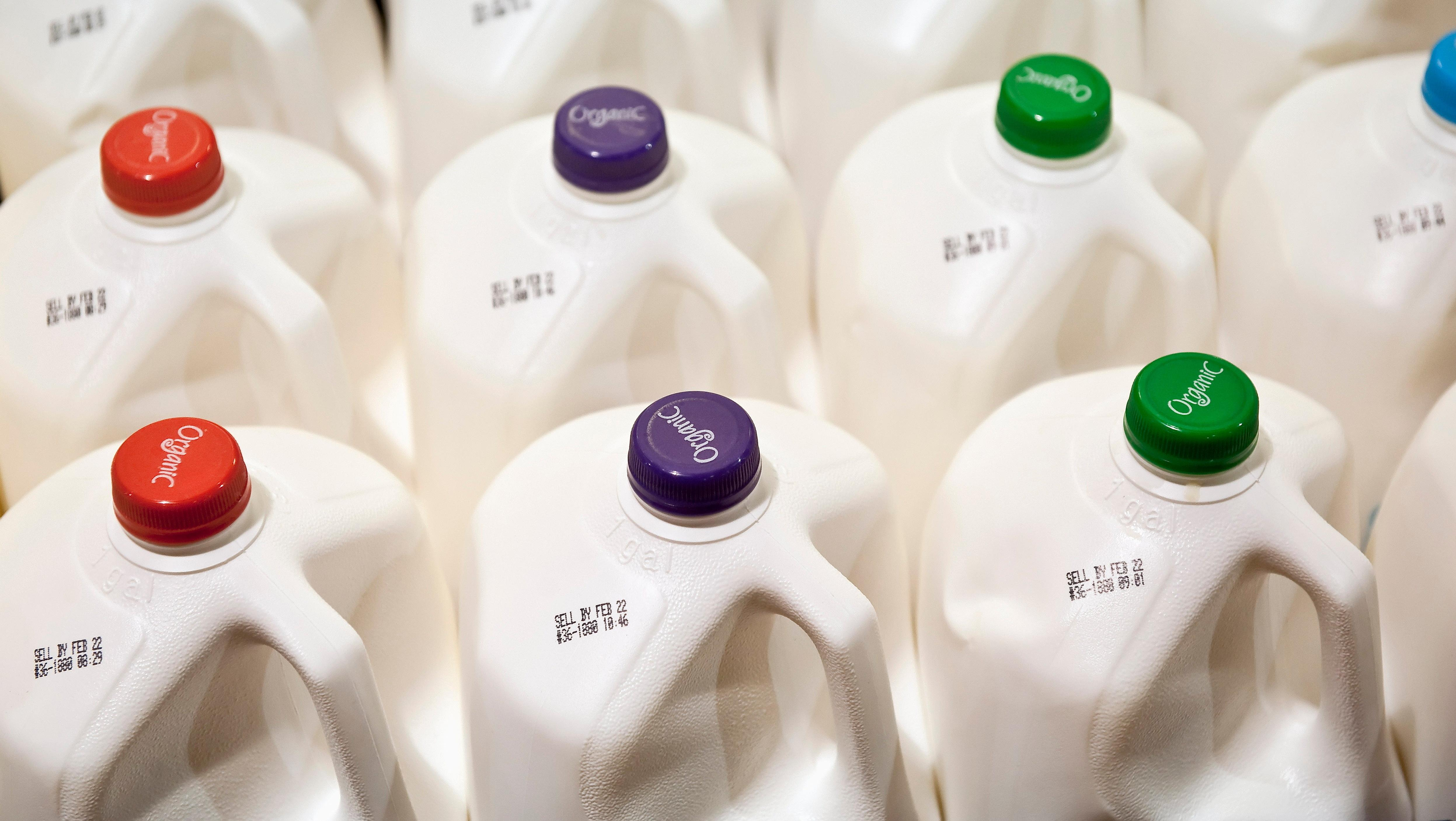No, That Dent On Your Milk Jug Does Not Pop Out When The Milk Is Spoiled
A factoid floating around social media is, in fact, completely wrong.
When executed properly, memes can be a gratifying form of entertainment—but if any of them feature purported facts, I take those with a grain of salt. I mean, you've seen the amount of trolling horseshit out there (sometimes for marketing purposes). Now, there's a meme going around Facebook claiming that those round indents on the side of a gallon of milk indicate whether the milk inside has gone bad. If the plastic indent bulges outward, the claim goes, it's because the jug has been expanded by gas from the spoiled milk. USA Today reports this is, in fact, not true.
I get the general idea behind this. It seems reasonable: Sometimes rotten stuff produces gas, and if you're lucky enough, you'll notice it and avoid that nasty old food. But experts say that bacteria can spoil milk without creating any gas whatsoever. Bob Roberts, professor and head of food science at Pennsylvania State University, told USA Today that there are two types of bacteria in milk. One is the type that has survived the standard pasteurization process; the other type is bacteria that's been introduced after pasteurization.
Refrigerated milk usually spoils because of the first type of bacteria, the kind that survives the pasteurization process. That bacteria breaks down proteins and fat, causing that rancid milk smell (you know the one). This particular bacteria usually doesn't produce gas, which means that indent on the jug isn't going to bulge, even if the milk is funky.
So, what are the indents actually for? Matt Henrick, senior vice president of communications at the International Dairy Foods Association, explains that the indents are "interchangeable volume inserts," plastic molds that give producers exact control over the weight and volume of milk jugs during the manufacturing process.
The plastic from which the jugs are made actually shrinks a bit over time, more within hot environments than cool ones. Depending on temperature differences—say, if the jugs are being made in winter versus summer—the interchangeable plastic inserts slightly change the size of the jugs while they're being produced. This avoids bottle shrinkage, overflow, or underfilling. (They could just do this with entirely different sizes of jug, but that would be way more expensive; the inserts let them keep the same size base mold and alter the volume with just the indent.) The indents also add structural integrity to the plastic. Who knew?
So, if this "fun fact" about milk jugs crosses your path online, now you'll be able to help stop the spread of misinformation. We've got way too much of that that going on already.
